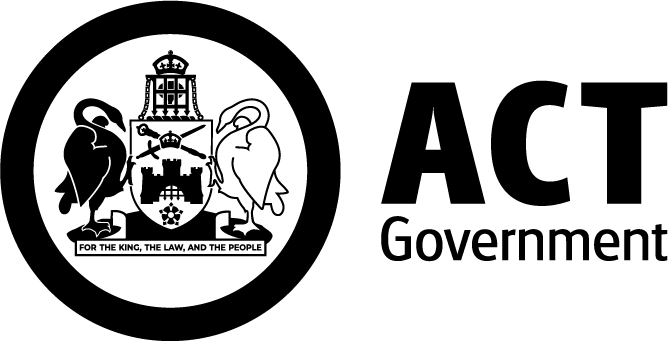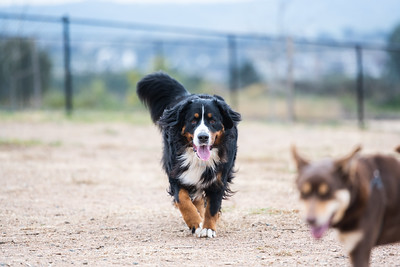Rules for dogs in public places
In the ACT, the following rules apply to dogs in public places:
- Dogs must be under effective control at all times. This means you must be able to prevent your dog from approaching other animals or people by restraining your dog or using commands, both in on-leash and off-leash areas.
- If you are walking multiple dogs, you must have effective control of all of the dogs at all times.
- Dogs must be kept on-leash on public land unless otherwise indicated.
- Dogs are prohibited from childcare centres, pre-schools, pre-schools and beaches. They are prohibited from sportsgrounds when in formal use and high school/secondary college during school hours and sport. They are also prohibited from some reserves and within 10 metres of playgrounds and barbecues when in use.
- You must remove all dog droppings and carry equipment to pick up your dog’s droppings.
- Assistance dogs are welcome in all public places.
Fines apply for breaching rules under the Domestic Animals Act 2000.
You can view all on-leash, off-leash, conditional off-leash and dog prohibited areas on ACTmapi’s dog exercise area map. Alternatively you can view the whole-of-ACT map (PDF 3.9 MB).
On-leash areas
Dogs must be on-leash and under effective control at all times. The person holding the leash must be able to prevent the dog from approaching other animals and people. On-leash areas include all streets, verges, footpaths and cycle paths and horse trails, including within 10 metres either side of the path. All lakes are dog on-leash areas unless otherwise signposted.
See the ACTmapi’s dog exercise area map to view on-leash areas.
Off-leash areas
Off-leash areas include dog parks, sportsgrounds (except during formal sporting events) and designated dog beaches.
Please note that dogs must be kept on-leash on all footpaths, regardless of whether they are in an off-leash area or not.
Dogs in off-leash areas must be under effective control at all times. They should only be off-leash if they remain in sight and can respond to and follow your commands. You must be able to prevent the dog from approaching other animals or people.
See the ACTmapi’s dog exercise area map to view off-leash areas.
Dog parks
Dog parks
Fenced dog parks are available at the following locations:
- Belconnen (Diddams Close, Lake Ginninderra)
- Casey (Springbank Rise)
- Duffy (Warragamba Avenue)
- Forde (Amy Ackman Street)
- Franklin (Nullarbor Avenue and Oodgeroo Avenue)
- Greenway (Mortimer Lewis Drive, Lake Tuggeranong)
- O'Connor (Fairfax Street)
- Yarralumla (Bank Street, Weston Park)
The ACT Government is also building a new fenced dog park in Lanyon. To stay up to date visit the Lanyon dog park webpage.
Dog park rules and etiquette
Your dog must be registered, desexed (unless a permit has been issued) and fully vaccinated before entering a dog park. Do not enter the dog park if your dog is aggressive or on heat.
You must be at least 16 years of age to supervise a dog at a dog park. You are responsible for the dog and must remain alert and focused on the dog at all times.
Please remember the following when using a dog park:
- Keep your dog under effective control.
- Leave immediately if you are concerned about your dog or another dog at the park.
- Clean up and place waste in the bins provided.
- Use the appropriate small or large dog enclosure where applicable.
- Don’t take more than 2 dogs into the enclosure.
- Don't bring in food or toys that will cause an issue.
- Don't bring in children under 14 without an adult. Supervise any children closely.
- Don’t smoke.
- Don't let your dog crowd the gate. When entering, quickly move away from the entrance and into the open. This will help disperse dogs that may come to greet your dog so your dog will not feel cornered or threatened.
- Don't enter the dog park if it is crowded.
- When entering or leaving through the double gated transition area, make sure it is empty so dogs won’t escape or fight in a constrained space.
- Keep moving around the dog park to reduce territorial behaviours.
- If your dog is running in a group of dogs, keep a close eye on them and call it away as soon as you see any signs showing a dog is uncomfortable.
- The drinking bowl has been designed to not retain water so it won’t attract snakes. If it is not draining effectively please empty it once your dog has taken a drink.
Dog swimming areas
Dog swimming areas
Designated dog swimming beaches include:
- Point Hut Pond, Gordon
- Lake Tuggeranong, Greenway
- Orana Bay, Yarralumla
- Kurrajong Point Beach, Weston Park, Yarralumla
- Yerrabi Pond, Gungahlin
- Lake Ginninderra, Belconnen
- Diddams Close, Belconnen
- Uriarra Crossing East
- Uriarra Crossing West
- Swamp Creek
- Western riverbank of Point Hut Crossing recreational area (please note dogs must remain on-leash on the eastern riverbank)
See the ACTmapi’s dog exercise area map to view off-leash areas.
Swimming areas are regularly tested for bacteria and blue-green algae. As pets may drink the water, they are at a higher risk of exposure. Always check the signposts or water quality report before allowing your dog to swim.
Dog prohibited areas
Dogs are not allowed in the following areas:
- childcare centres, preschools and primary schools
- high schools and secondary colleges during school hours, as well as after hours during school sport and training
- fields, ovals and playing areas during formal sport
- within 10 metres of a public play space (if children are playing on it)
- within 10 metres of a public barbecue when in use
- Gibraltar Forest Regeneration Area formerly known as Gibraltar Pines, Black Mountain Nature Reserve, Mulligans Flat sanctuary, Goorooyarroo Nature Reserve, Jerrabomberra Wetlands, Callum Brae Nature Reserve, Gungahlin Hill Nature Reserve, Rob Roy Nature Reserve and Dunlop, Gungaderra, Mullanggari, Jerrabomberra grasslands, and Crace grasslands.
Dogs which are assistance animals or have a permit are exempt and can access dog prohibited areas.
Assistance dogs
Some dogs are trained to assist a person with a disability. In the ACT it is illegal to deny someone with an assistance animal access to a public place. Please see the assistance animals page for more information.

